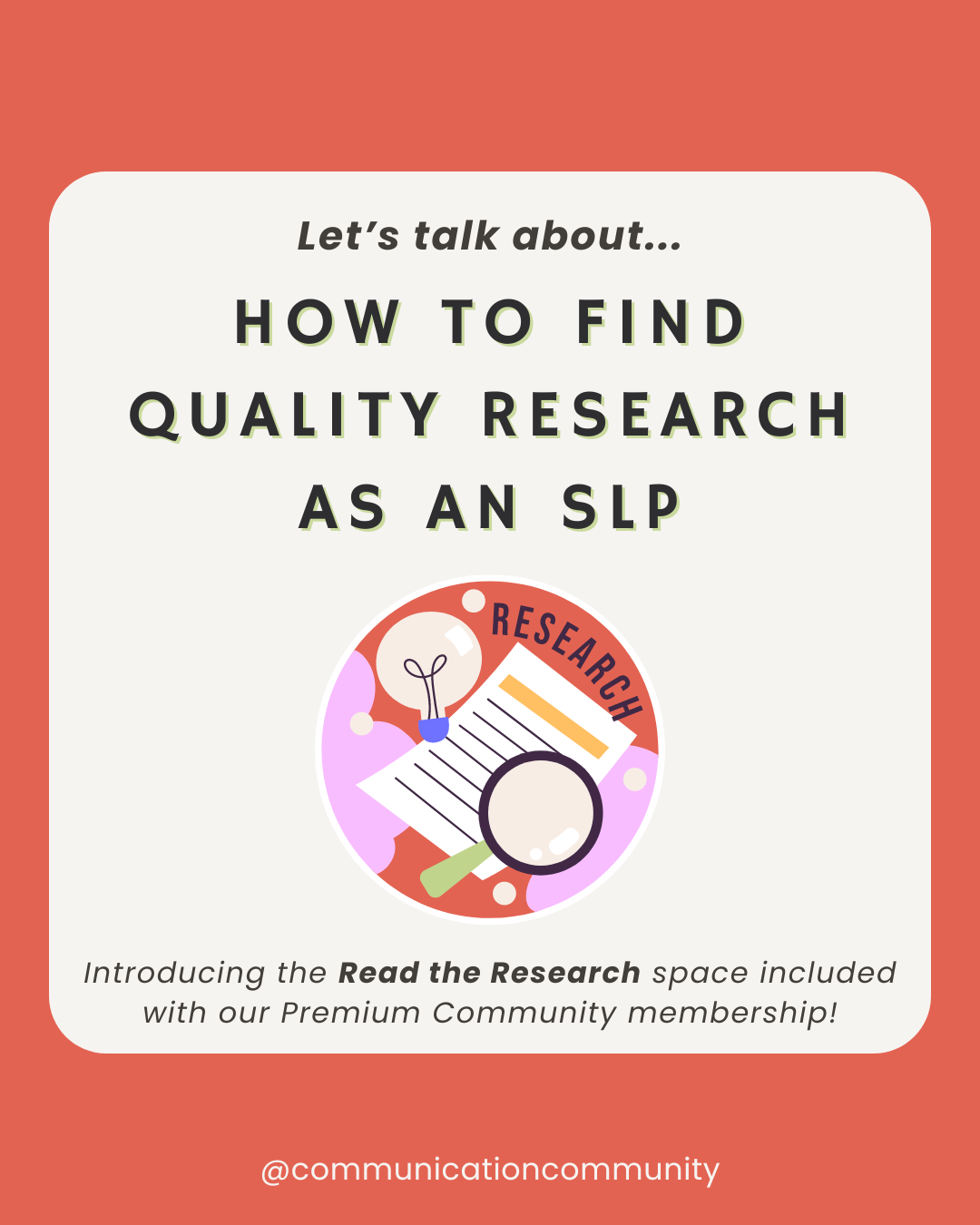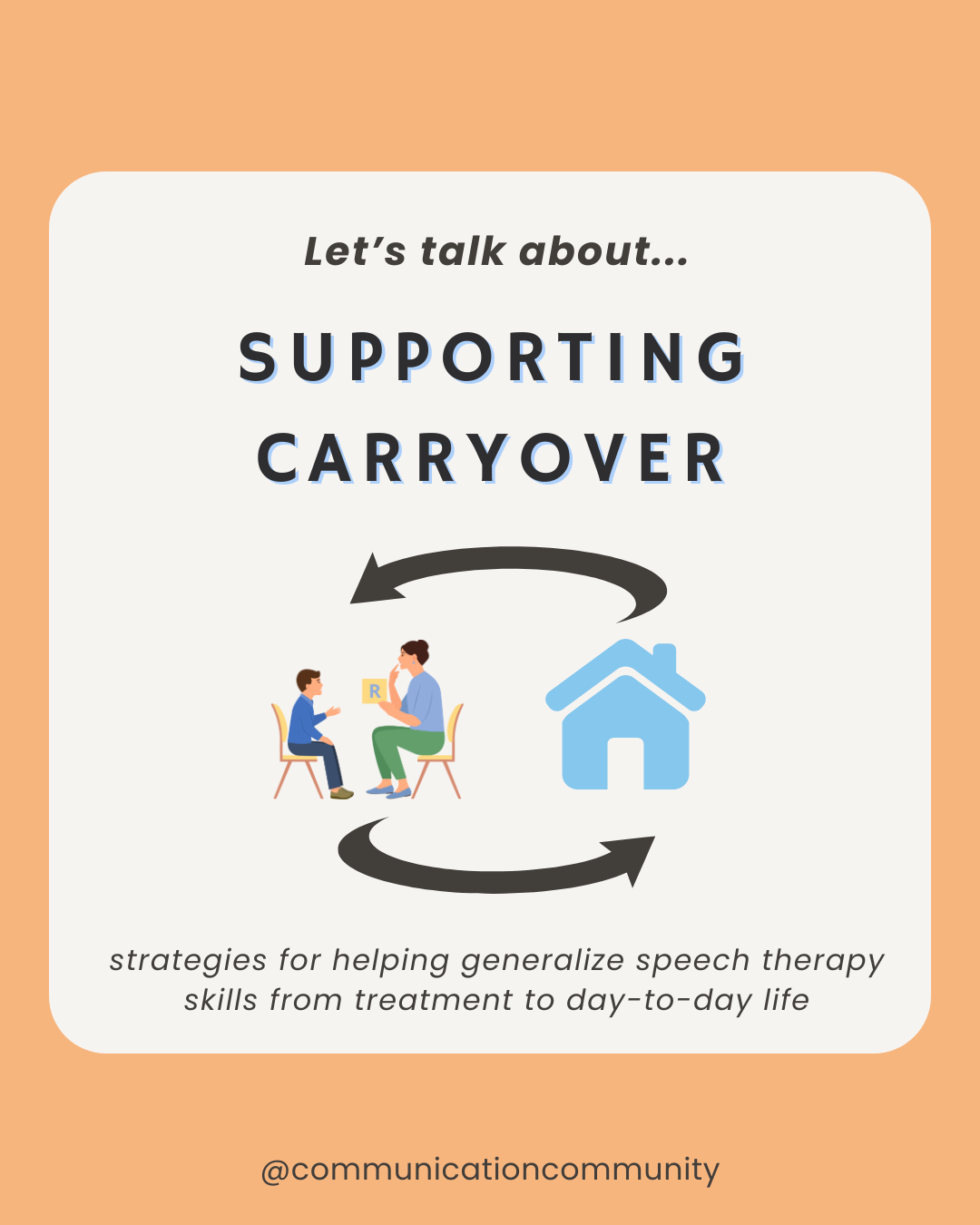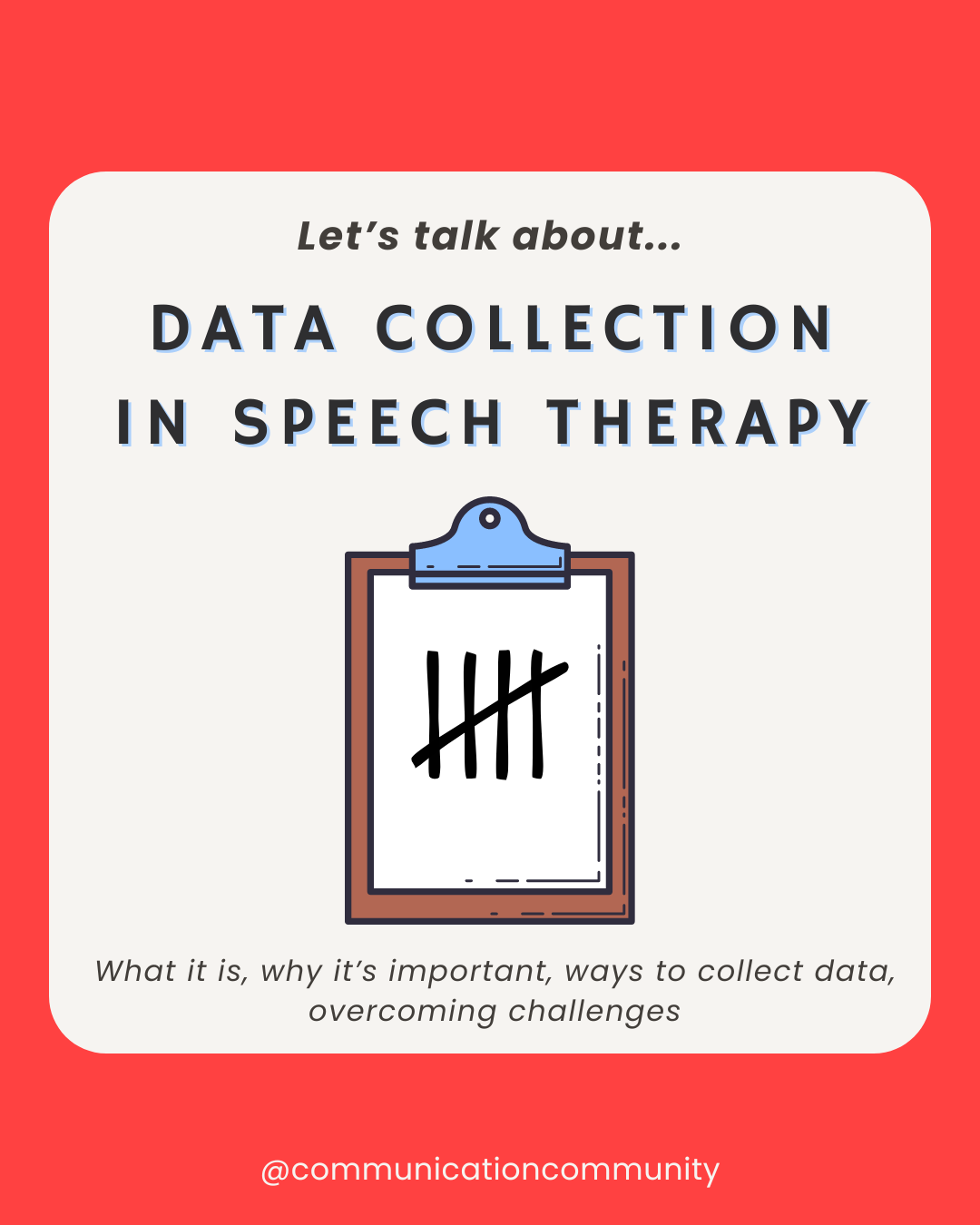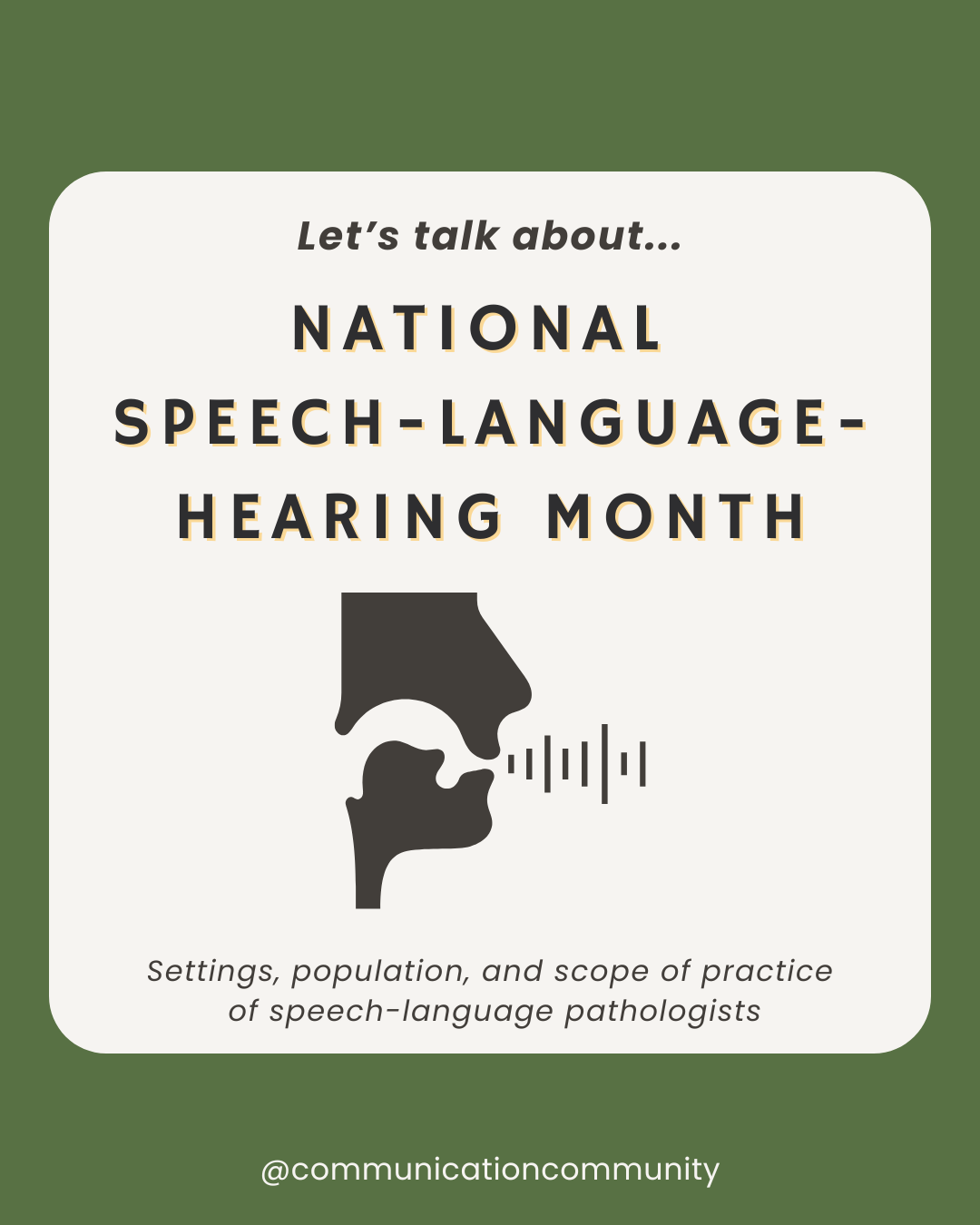Our comprehensive goal banks for school-aged language, AAC, Early Intervention & preschool, and fluency are available on our site or Teachers Pay Teachers store!
Save time creating goals with over THOUSANDS of possible goal combinations. Select your own combination of DO + CONDITION + CRITERION (and consistency) statements to develop personalized and measurable goals for your caseload.

What is Cluttering?
There are two types of fluency disorders: stuttering and cluttering. Individuals who stutter present with stuttering-like disfluencies, which include prolongations, repetitions, and blocks. Individuals who clutter have different speech disturbances.
Characteristics of cluttering include:
1. Irregular rate of speech
Individuals who clutter may sometimes speak much quicker than the average rate or much slower than the average rate
2. Irregular pauses
Individuals who clutter may pause at abnormal times when speaking, such as in the middle of a sentence rather than the end of a sentence
3. Omitting syllables:*
Individuals who clutter may omit syllables in words, such as leaving off the end of a word or not producing the syllable in the middle of a word (e.g. elephant = e-phant)
*Note: this is different from omitting syllables due to an articulation or phonological disorder
4. Changing topics frequently
Individuals who clutter may jump around topics often
5. Excessive typical disfluencies
Individuals who clutter may use words such as “um” or “like” a lot or may revise what they are saying throughout their utterances (e.g. “I want, I go, I need help”)
6. Unawareness of fluency problems
Individuals who clutter may not recognize that they are presenting with any of the previously mentioned characteristics. They may have a harder time repairing communication breakdowns because they are unaware that a breakdown has occurred.
All of these characteristics can impact an individual’s overall intelligibility, or how well they can be understood. They can also impact pragmatic, or social, language skills.
Cluttering Co-occurrences
Cluttering is often co-occurring with other disorders or conditions, including:
- Stuttering
- Learning disabilities
- Auditory processing disorders
- Autism
- ADD/ADHD
Writing Cluttering Goals
If you haven’t already, check out our article that outlines How to Write Speech Therapy Goals. This post provides an in-depth template of our Communication Community goal writing formula (with examples)! For the purpose of this article, we will focus specifically on writing goals for cluttering.
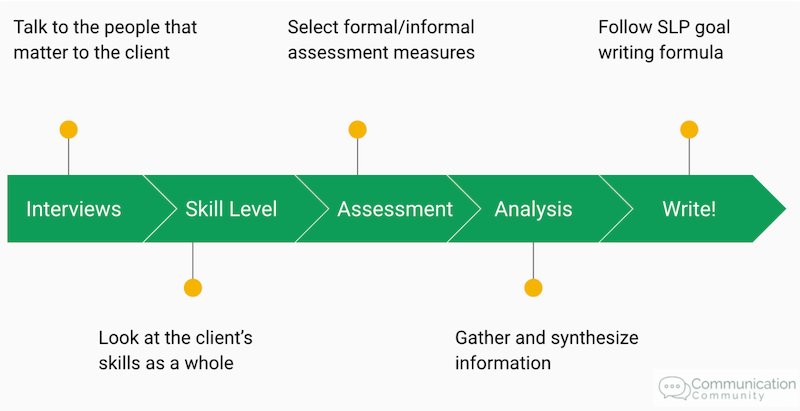
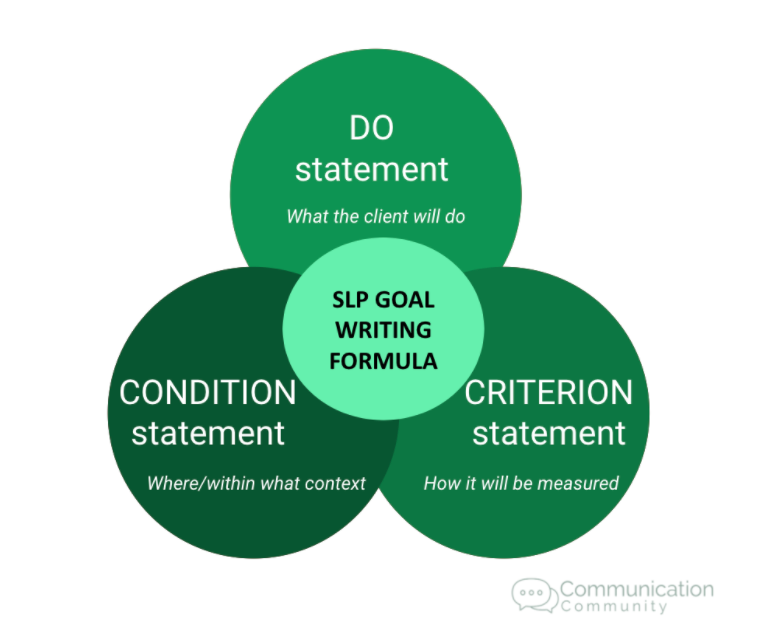
As seen above, speech goals should be written with 3* components in mind: the DO statement, the CONDITION statement, and the CRITERION statement.
*Also commonly included is consistency (we incorporate this!). Aka: does the individual have to meet a specific criterion more than once? A common example of this may include across 3 consecutive sessions. This is usually something understood by the therapy organization/service provider and is sometimes included in the written goal itself. This is to ensure that the skill has been generalized and provides more reliable data that the skill has been properly mastered.
Writing a Cluttering Goal
First, we will break down a cluttering goal into the do, condition, and criterion statements. Continue reading for more sample cluttering goals!
DO statement
What the client is actually going to DO and the specific skill they will be working towards.
Example: maintain a steady rate of speech
CONDITION statement
The specific setting and/or context your client will work on this skill.
Example: during structured therapy tasks
CRITERION statement
How the client’s performance will be measured.
Example: in 9 out of 10 opportunities
DO + CONDITION + CRITERION
Example: [Client] will maintain a steady rate of speech, during structured therapy tasks, in 9 out of 10 opportunities.
There you have it: an example of a cluttering goal using our Goal Writing Formula containing the DO + CONDITION + CRITERION statements. You may also include a CONSISTENCY statement (as seen below in some examples).
Cluttering Goal Bank
The following are some goals that could be used for individuals who clutter. We want to note that this goal bank is not all-encompassing and ALL speech and language goals should be created based on results from a comprehensive assessment and with input from clients, caregivers, and the treatment team as well.
Though cluttering may co-occur with other disorders/conditions, the following goals are focused solely on cluttering.
Rate of Speech
-Example #1: [Client] will use a steady rate of speech, in sentences, with 90% accuracy.
-Example #2: [Client] will use pacing strategies (e.g., tapping out words), while reading aloud, in 4 out of 5 opportunities across 3 sessions.
Typical Disfluencies
-Example #3: [Client] will reduce the use of typical disfluencies, while sharing a past experience, to fewer than 1 per sentence in 80% of opportunities.
-Example #4: [Client] will reduce the use of typical disfluencies, while inside the classroom, to fewer than 5 per statement in 75% of opportunities.
Appropriate Pausing
-Example #5: [Client] will pause appropriately when speaking, during structured therapy tasks, in 8 out of 10 opportunities.
-Example #6: [Client] will indicate whether or not another individual paused appropriately when speaking, during structured therapy sessions, with 80% accuracy.
Topic Maintenance
-Example #7: [Client] will maintain the topic of conversation for 2 conversational turns, with familiar communication partners in 8 out of 10 opportunities.
Omitting Syllables/Word Endings
-Example #8: [Client] will produce all syllables of words, when reading aloud, with 80% accuracy.
Communication Breakdowns
-Example #9: [Client] will repair a communication breakdown, given 1 verbal prompt from a familiar communication partner, in 7 out of 10 opportunities.
-Example #10: [Client] will indicate whether or not their message was clear or needed to be repaired, during structured tasks, in 4 out of 5 opportunities.
We hope that you find these goals helpful. For more goals posts, check out our collection of other speech and language goals:
- How to Write Pragmatic Language Goals
- How to Write Receptive Language Goals
- How to Write AAC Goals
- How to Write Articulation Goals
- How to Write Expressive Language Goals
- How to Write Play Skills Goals
- How to Write Fluency Goals (Stuttering)
- How to Write Voice Goals (Pediatric)
- How to Write Phonological Awareness Goals
Want to know how we prep ourselves for goal-writing (and more)?
These are some of our favorite resources for working:
- Clipboard with storage- we use ours ALL THE TIME!
- Some really nice pens - the feel of a pen that writes so well...priceless.
- Blue light glasses- for when excessive screen time is just...necessary
Happy writing!
This post contains some affiliate links and we may be (slightly) compensated if you use them, but all opinions are our own. We appreciate the support!
Citations/further research:
https://www.asha.org/practice-portal/clinical-topics/fluency-disorders/

![How to Write Cluttering Goals [with goal bank]](https://www.communicationcommunity.com/content/images/2021/09/fluency-disorders-goals.png)
